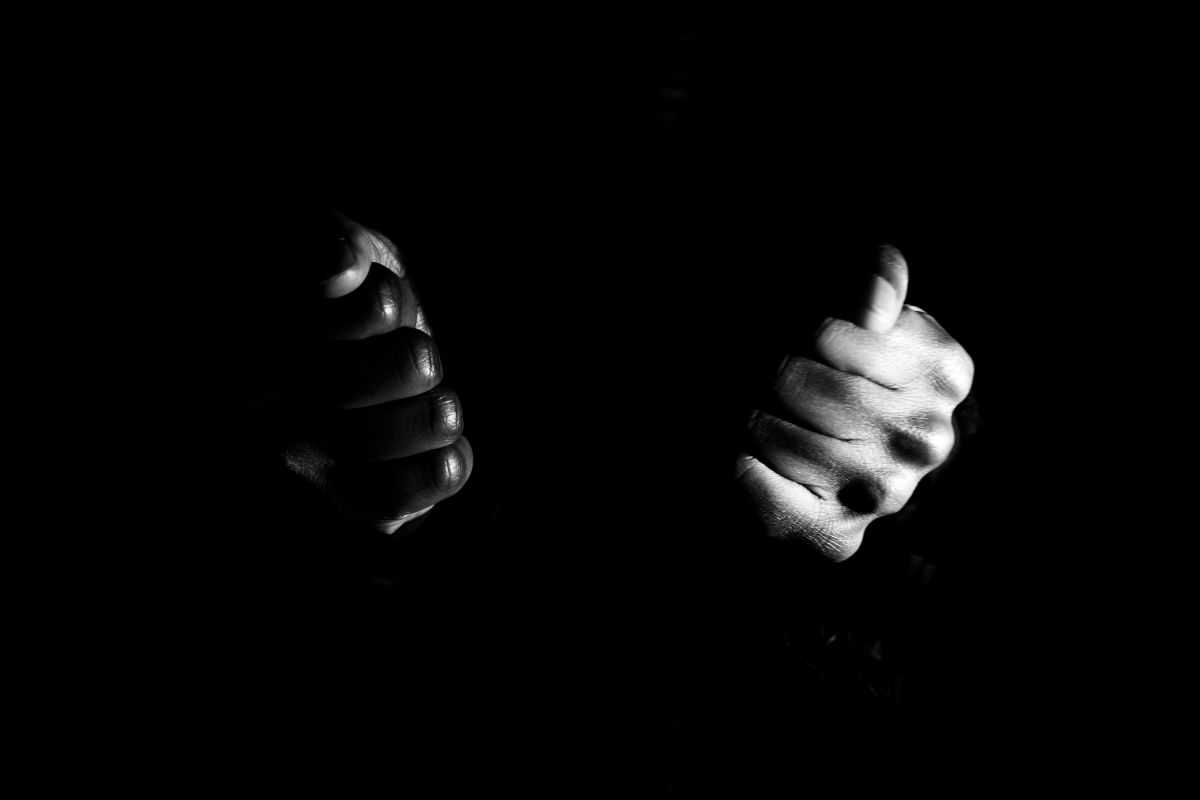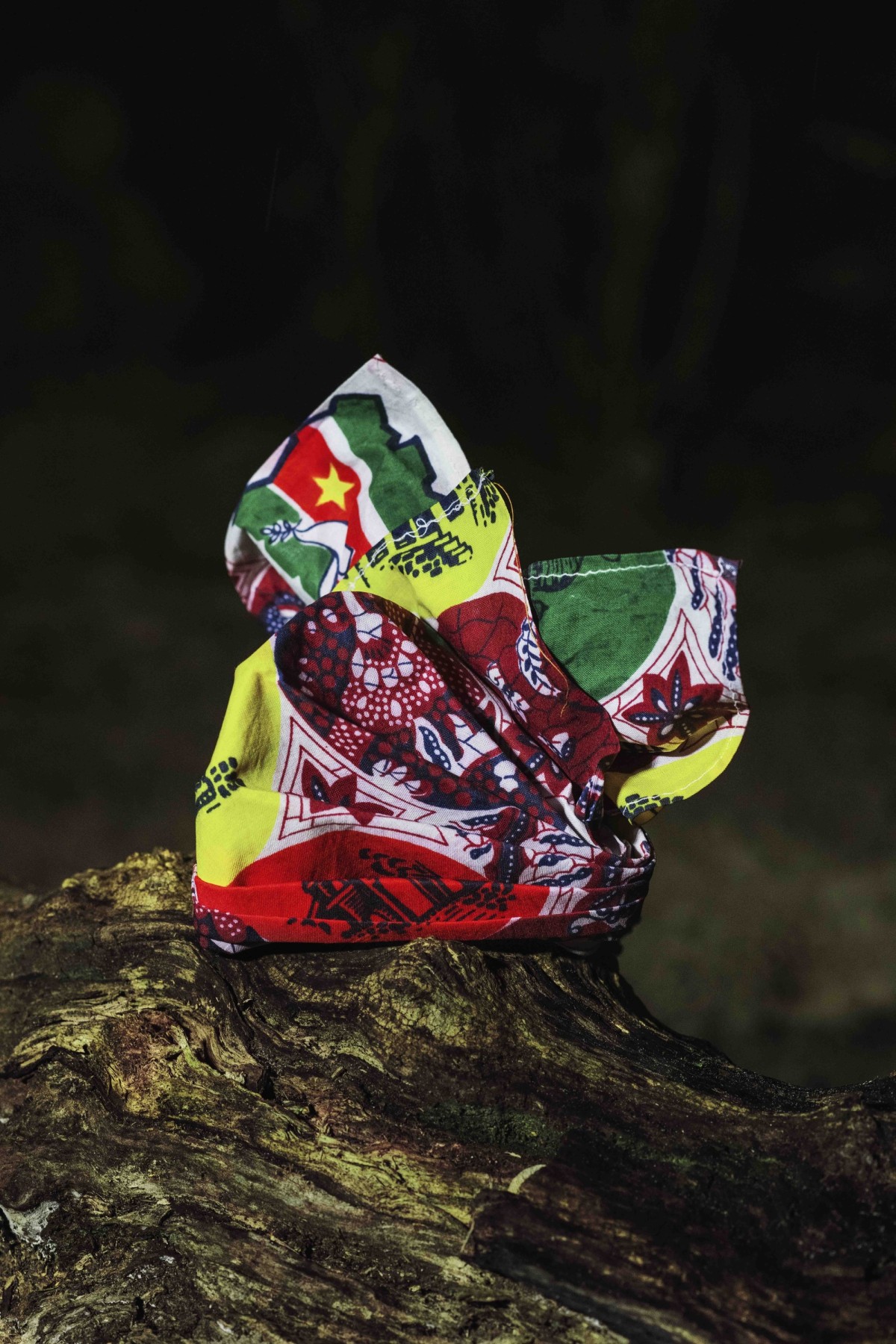ROOF-A Jong Talent & Experiment | Michelle Piergoelam

Asking for stories, grasping for images
There are works of art that present themselves as inventions, giving the viewer access to the poetry of light, colour and space, and to having a human body. Other works of art parade like models on a catwalk, arousing admiration and desire that radiates towards the designer of all this beauty who, as a celebrated genius, receives the applause afterwards.
Michelle Piergoelam’s work is more like a voice, soft but clear, asking us to awaken our imagination, together with her and a few others. If you say yes, you find yourself on a plantation in Suriname, during the dark period of slavery. It is night-time, and further on, in the forest, men and women whose parents and grandparents were brought on captive ships from Africa come together. They form a circle around a woman who tells stories while the humid heat of the forest presses on the shoulders of the listeners. The narrator’s words climb and then dive down around her like a flock of birds in the clearing. The listeners later remember the strongest and funniest images from those stories, and the narrator’s hands, which are a part of the story – how her graceful fingers move, speaking a code language that hides the experiences of the African forced labourers from the masters of the plantation.
The stories are about the spider Anansi, who, like the listeners, comes from Africa, and who is a virtuoso practical joker, swindler, and mocker. In his stories, he is invariably the underdog but always ends up outsmarting the rich and powerful Tiger, the governor, or other powerful people with his antics, and he makes fun of them. In her project The Untangled Tales, Michele Piergoelam reflects on what can remain of such gatherings and stories in our imagination and memory, in the minds of those who were there, or their great-grandchildren.
Her work makes no claim to documentary truth; it is her exceptional photographic skill and the poetry of her imagination that succeed in making a Rotterdam forest tell those hopeful and funny fables, the codes in women’s hand gestures and folded headscarves, which play an important role in Afro-Surinamese culture.
There is something else remarkable about the way Michelle works. Her approach is questioning and looking for cooperation. Although her parents' roots lie in Suriname, Michelle has never been there. By working together with people who gather and keep the Afro-Surinamese culture alive, she supplemented her photographic eye and her imagination with the knowledge and finesse of experience. She learned to fold the headscarves that said, “wait for me at the corner”, or “don't fight me”, and worked with writers who knew the Anansi stories. In this way, a book was created alongside the series of images, which capture the hand gestures, the headscarves, open spaces and silhouettes that refer to that collective past.
Michelle Piergoelam’s work is not limited to photographs. The images form series and connect to texts, legends, and the cultural practices of existing communities. Like a guide and with gentle coercion, Michelle leads our eyes through those stories and the images and memories that make them up.
Looking at Michelle's project I heard water holds a secret, one gets the feeling that the photographs and the poem do two things at once: they take the viewer into an ambiguous dream world, where the gaze is fixed expectantly on the revelation of that water secret, jumping from detail to detail, from atmosphere to atmosphere. Her poem and images also depict the patient, analytical attention with which she wants to investigate the memory of the day she almost drowned with a truly open mind. Not as a therapist or an autobiographer, but as a photographing poet, with an eye for the suppleness and cunning of memory, the ambiguity of images and the deceptive power of symbols.
Michelle found inspiration in the Surinamese indigenous legend of the princess Maiwie, who was forbidden to go near the river and naturally went anyway. A river spirit enticed her to meet his parents and so the princess became a water nymph, or a mermaid, or a river spirit – whatever you want to call it. Separated from her family forever.
That day, perhaps in a vision that will always be unfathomable and painful, she had an encounter with the power and mystery of water. Even to science, water is still a substance with mysterious properties. What is certain is that it is the source of all life on earth. At the same time, water is a great and deadly secret. With her project, Michelle offers us a glimpse of this with great precision and clarity.
Text: Dirk van Weelden
